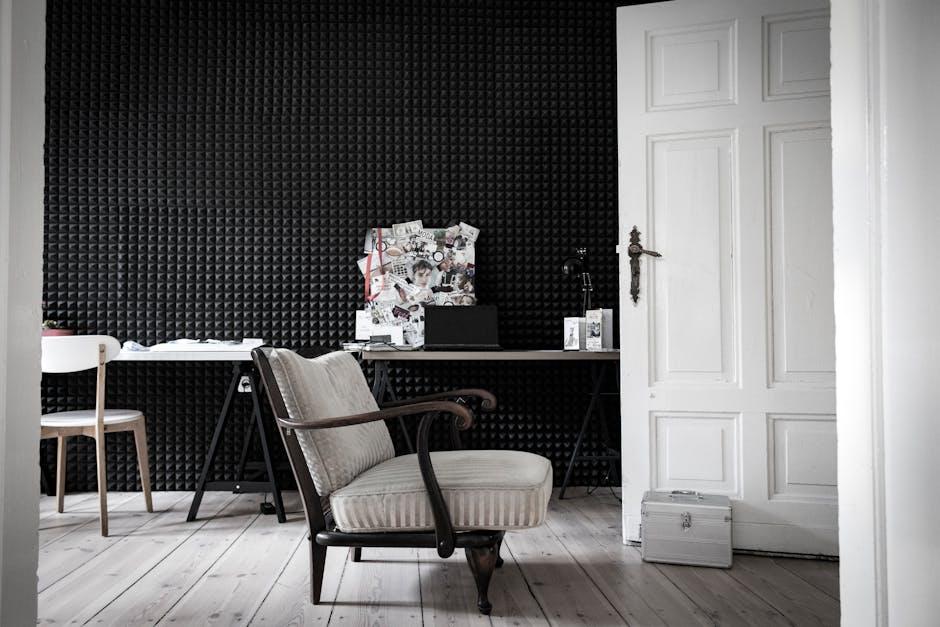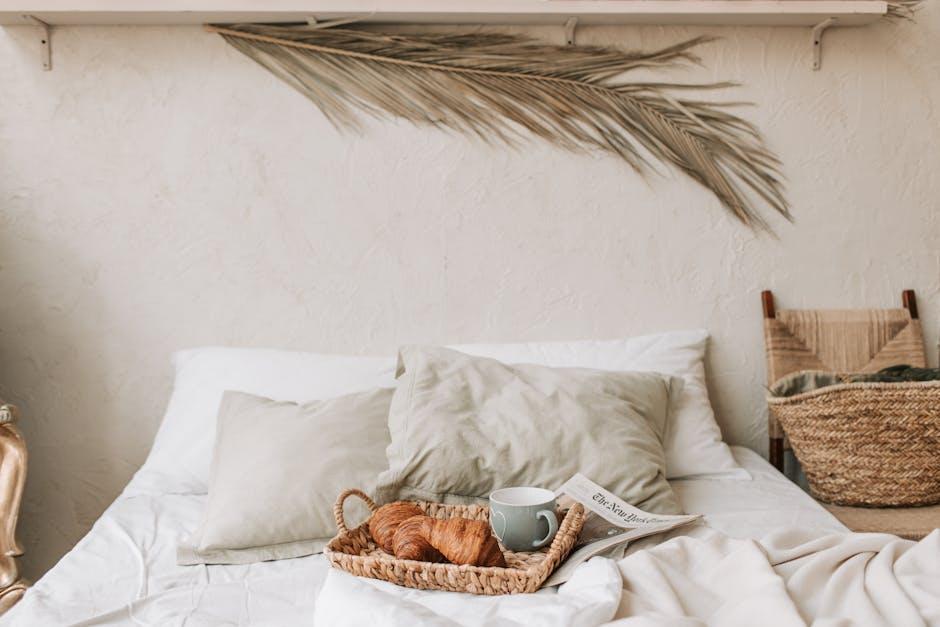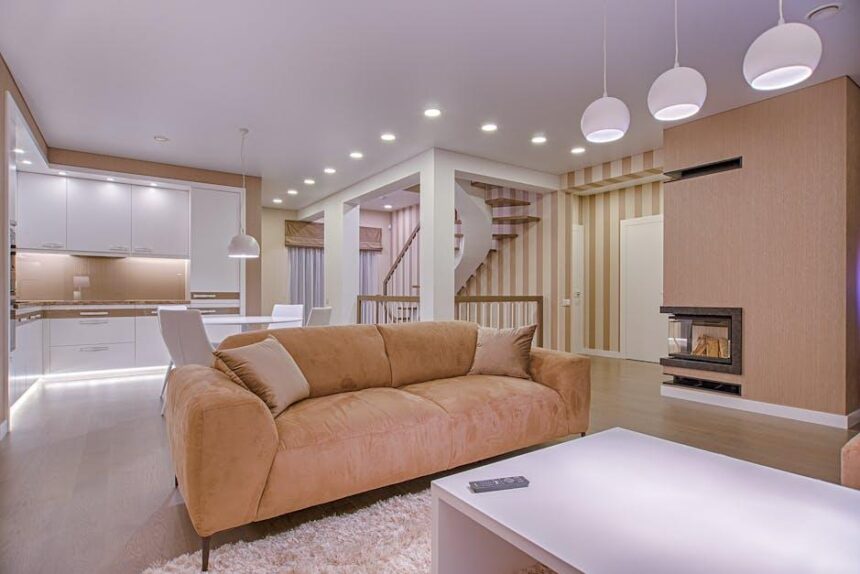In the symphony of daily life, our homes often hum with an unceasing chorus of sounds-chatter, laughter, footsteps, and the hum of modern devices. Yet, amid this vibrant soundtrack, there lies a growing yearning for silence, a space where the mind can pause and the soul can breathe. Creating quiet zones at home is more than just an exercise in soundproofing; it is an intentional crafting of sanctuary, a deliberate pause button in our bustling routines. This article explores the art and science of carving out these serene pockets within our living spaces, offering a blueprint for calm amid the clamor.
Designing Soundproof Spaces for Ultimate Serenity

Creating a sanctuary of silence within your home involves more than just thick walls and heavy doors; it’s an art of layering sound barriers that work harmoniously to block external noises and absorb internal echoes. Start by integrating acoustic panels made from natural fibers or foam, which reduce reverberation and soften ambient sounds. Consider installing double-glazed windows paired with heavy curtains to keep street noise at bay. Don’t underestimate the power of strategic furniture placement-bookshelves lined with books, plush sofas, and thick rugs all contribute to muffling sound waves, transforming your space into a cocoon of calm.
Beyond materials, attention to architectural details makes a significant difference. Simple modifications such as sealing gaps around doors and windows with weatherstripping or door sweeps prevent sound leaks. Adding a layer of mass loaded vinyl (MLV) behind walls or under floors can drastically improve sound isolation without sacrificing precious square footage. To help you decide on the best soundproofing elements for each room, here’s a quick comparison:
| Material | Best For | Effectiveness |
|---|---|---|
| Acoustic Panels | Living rooms & Home offices | High |
| MLV (Mass Loaded Vinyl) | Walls & Floors | Very High |
| Double-glazed Windows | Bedrooms & Quiet zones near streets | High |
| Weatherstripping | Doors & Window frames | Moderate |
Incorporating Nature and Soft Textures to Absorb Noise

Bringing elements of nature indoors does more than just elevate your home’s aesthetic-it also plays a significant role in sound absorption. Plants, for instance, act as natural sound buffers. Their leaves and soil absorb and scatter noise, helping to soften harsh sounds that would otherwise bounce off hard surfaces. Incorporate a diversity of greenery such as ferns, spider plants, and pothos in your quiet zones. Besides their calming visual appeal, adding these green companions can reduce echo, especially in rooms with large windows or bare walls.
Soft textures further complement natural elements by muffling and diffusing noise. Thoughtfully layering textiles such as thick rugs, upholstered furniture, and plush curtains can transform a noisy area into a sanctuary of calm. Consider integrating:
- Velvet cushions that add depth and absorb sound vibrations
- Woolen throws that cover hard surfaces and offer warmth
- Fabric wall hangings that reduce echo and add character
| Material | Sound Absorption Level | Additional Benefit |
|---|---|---|
| Indoor Plants | High | Air purification |
| Wool Rugs | Medium | Comfort underfoot |
| Velvet Upholstery | High | Luxurious texture |
Selecting Furniture and Layouts that Minimize Distractions

Choosing the right furniture and positioning it thoughtfully can profoundly impact the tranquility of your designated quiet zone. Opt for soft, upholstered pieces like armchairs and sofas that absorb sound rather than reflecting it. This simple choice helps dampen ambient noise, creating a cocoon of calm. Additionally, consider furniture with built-in storage to reduce clutter, as a tidy space naturally fosters a serene atmosphere. Low-profile furniture also minimizes visual distractions, allowing your mind to rest more easily.
When it comes to layout, aim for a configuration that maximizes separation from high-traffic areas and noisy appliances. Position seating away from windows facing busy streets or communal spaces to reduce auditory distractions. A small table or shelf can serve as a subtle barrier, enhancing privacy without impeding light flow. To aid your planning, refer to the table below showcasing ideal furniture types matched with layouts that optimize quiet and focus:
| Furniture Type | Recommended Layout | Distraction-Reduction Benefit |
|---|---|---|
| Recliner or Lounge Chair | Corner placement, angled away from doorways | Blocks noise pathways; enhances personal space |
| Bookshelf or Room Divider | Between quiet zone and common areas | Visual and acoustic buffer |
| Small Side Table | Adjacent to seating for personal items | Minimizes unnecessary movement, reduces distractions |
- Soft cushions and rugs: Absorb sound and add comfort
- Low lighting fixtures: Prevent harsh glare and maintain calm ambiance
- Clear pathways: Reduce sudden interruptions from foot traffic
Implementing Technology Solutions to Enhance Quietness

Modern technology offers an array of innovative tools that can dramatically reduce noise levels, transforming any space into a serene sanctuary. From smart soundproof panels that adapt to changing acoustic conditions to noise-canceling systems integrated into your home’s HVAC or entertainment units, the possibilities are expanding every day. Additionally, white noise machines and app-controlled soundscapes create customizable ambient backgrounds, masking intrusive sounds and fostering tranquility. Incorporating smart home devices allows you to monitor and control noise pollution in real time, ensuring your quiet zone remains undisturbed throughout the day.
- Smart soundproof panels: Automatically adjust to minimize echoes and external noises.
- Noise-canceling HVAC units: Reduce mechanical hum without compromising airflow.
- White noise and nature sound apps: Create personalized atmospheres for relaxation or work focus.
- Real-time noise monitoring devices: Alert you to spikes in sound levels and suggest adjustments.
| Technology | Function | Best Use |
|---|---|---|
| Adaptive Soundproof Panels | Auto-tune acoustics | Home offices & bedrooms |
| Noise-Canceling Fans | Reduce HVAC noise | Living rooms & study spaces |
| Sleep Sound Machines | Mask unwanted noise | Bedrooms & meditation areas |
| Noise-Level Monitors | Alert spikes & control | Near play or work zones |
In Summary
As the pace of modern life continues to quicken, carving out quiet zones at home becomes more than a luxury-it’s a necessary refuge for the mind and soul. By thoughtfully designing these tranquil spaces, we invite moments of stillness into our daily rhythms, allowing creativity to flourish and stress to dissolve. Whether it’s a cozy corner, a sunlit nook, or a dedicated room, these quiet zones become sanctuaries where silence speaks volumes. Embrace the art of quiet, and let your home transform into a gentle haven amidst the noise of the world.











